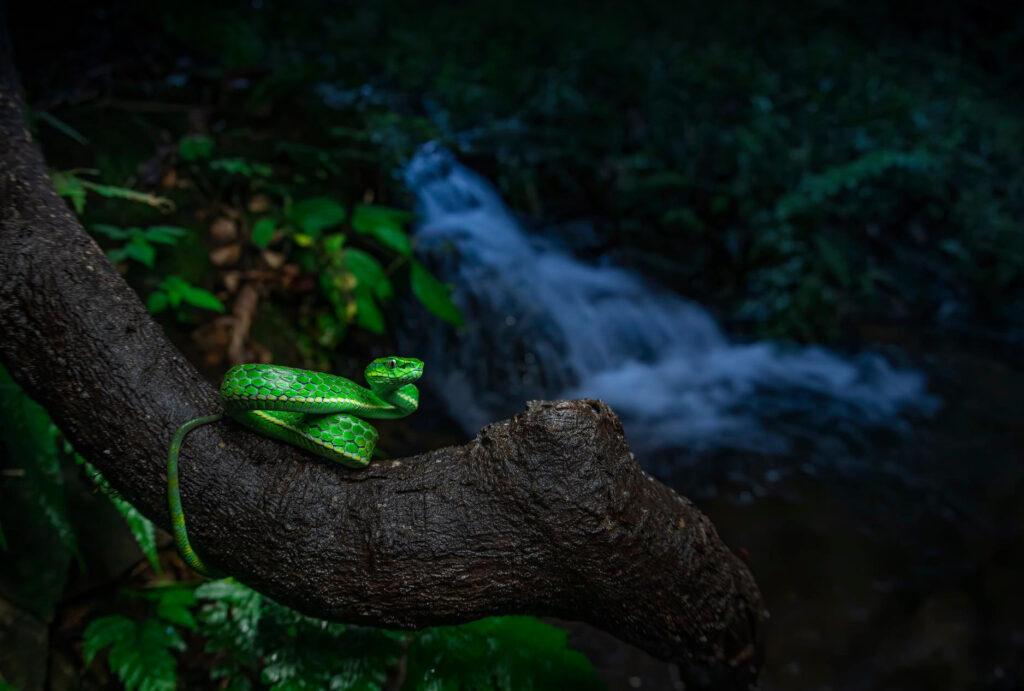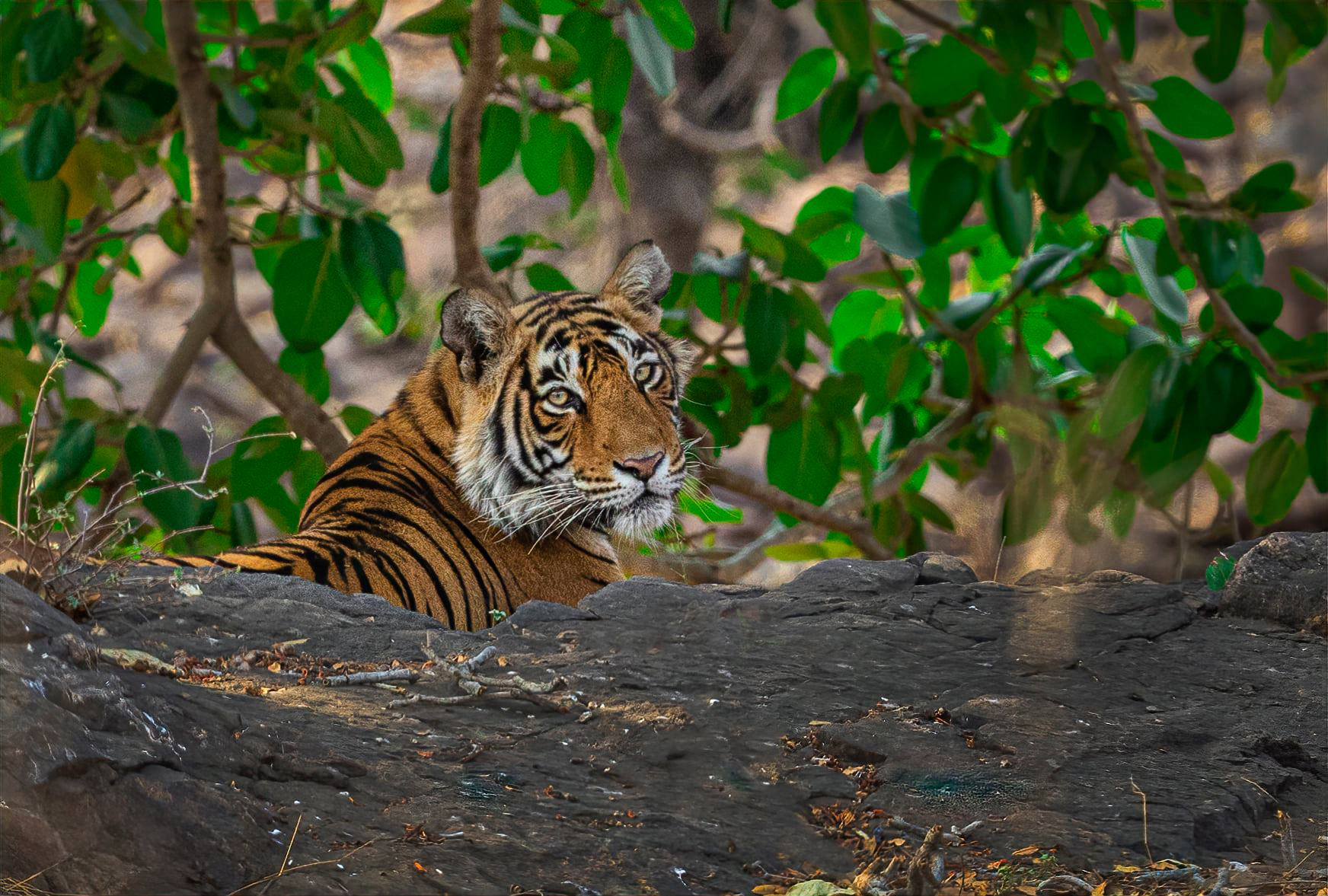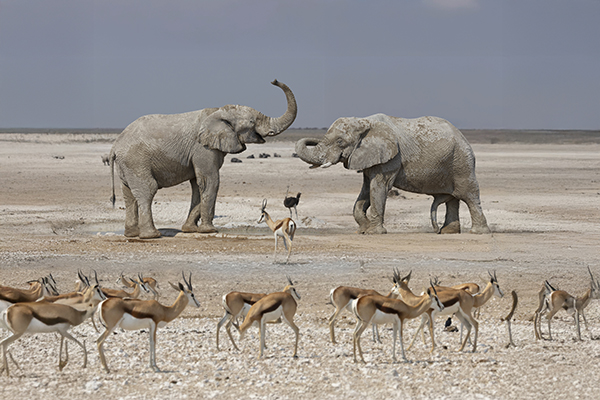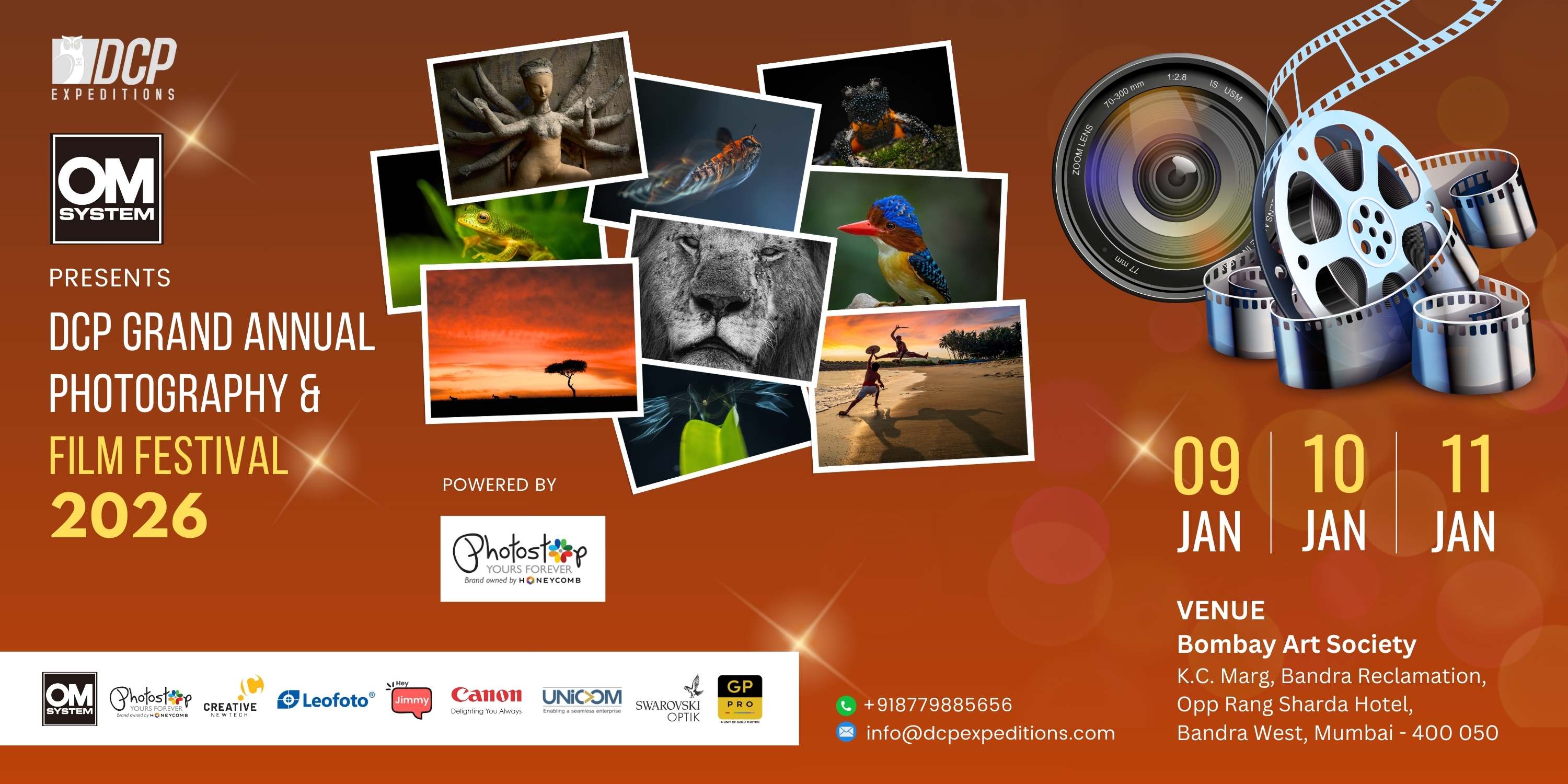Macro photography is an exhilarating yet demanding genre of wildlife photography that pushes photographers to their limits. Venturing into the heart of a rainforest, often during the monsoon season, photographers must contend with a multitude of challenges that test their physical endurance, technical skills, and creative vision.
Rains and harsh weather conditions:
Macro photographers often find themselves working in rainy weather, high humidity, and unpredictable weather patterns, making it essential to protect their equipment and themselves from the elements.
No ambient light:
Shooting at night or in dense foliage means that photographers must rely on artificial light sources, such as flash or torches, to illuminate their subjects.
Navigating challenging terrains:
Macro photographers often need to walk through rainforests, traverse muddy trails, and navigate uneven terrain, requiring a good level of physical fitness and agility.
Physical flexibility:
To get up close and personal with tiny subjects, photographers may need to crawl, stoop, or lie down in uncomfortable positions, demanding flexibility and patience.
Insects, leeches:
Rainforests are home to a multitude of biting insects, spiders, leeches, and other invertebrates that can pose a threat to photographers’ health and safety.
Reptiles and other wildlife:
Photographers may encounter venomous snakes, spiders, and other wildlife that require caution and respect.
When photographing reptiles, it’s crucial to exercise extreme caution. If you’re new to reptile photography, we strongly advise against approaching these animals without the guidance of an experienced expert who has studied reptilian behavior. In India, four venomous snake species are responsible for most snakebite-related deaths. If you are not knowledgable about how to differentiate a non venomous from a venoumous snake, to ensure your safety, consider every snake venomous and take necessary precautions.
Our team of experts has extensive experience studying reptile behavior, allowing us to provide a safe environment for photography. With their guidance, you’ll have the opportunity to capture stunning images of reptiles while minimizing the risk of accidents.

Despite the challenges, macro photography offers a unique perspective on the natural world, revealing the intricate details and fascinating behaviors of tiny creatures that often go unnoticed. For photographers who are willing to brave the elements and push their limits, macro photography can be a truly rewarding and exhilarating experience.
To capture stunning macro photographs, it’s crucial to be well-prepared with the right equipment and accessories.
Here’s a comprehensive list of things to carry:
Camera and Lenses
- DSLR or Mirrorless Camera with a dedicated Macro lens (e.g., 60mm, 100mm, or 200mm)
- External flash unit to illuminate your subjects and reduce shadows
- Diffuser to soften the light and minimize harsh reflections
Power and Storage
- Fully charged batteries for your camera and flash
- Battery charger and extra pack of camera batteries
- Backup memory cards or external HDD storage drives to store your precious images
- Laptop for data transfer and image review (optional)

Lights
- Torch or head torch to navigate and set up in low-light conditions. Head torch makes your both hands free to handle your camera freely
- Extra batteries for your torch and other equipment
Protection and Safety
- Raingear (ponchos or waterproof jackets) to protect yourself and your equipment
- Leech socks and ankle-high trekking shoes or gumboots to protect your feet from leeches and rough terrain
- Dull-colored clothes (camouflaged, olive, or khaki) to blend in with the environment
Personal and Medical Essentials
- Medical kit with essentials like band-aids, antiseptic wipes, and pain relievers
- Toiletries like hand sanitizer, toilet paper, and biodegradable soap
- Mosquito and insect repellents to keep bugs at bay

By carrying these essentials, you’ll be well-prepared to capture stunning macro photographs while exploring the great outdoors.









